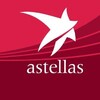Efficacy Confirmation Study of CDP870 in Early Rheumatoid Arthritis
Rheumatoid Arthritis

About this trial
This is an interventional treatment trial for Rheumatoid Arthritis focused on measuring Cimzia, Early RA, Certolizumab Pegol
Eligibility Criteria
Inclusion Criteria:
Subjects with RA as defined by the ACR/EULAR criteria (2010) who meet all of the following criteria:
- Subjects who developed RA within one year after onset of RA.
- Subjects who have never received MTX before (MTX naive)
- Subjects whose disease activity is moderate or higher (DAS28(ESR) ≥ 3.2)
- Subjects must satisfy at least two of the three criteria (Anti-CCP antibody positive, Rheumatoid factor positive, Presence of X-ray erosion) for poor prognostic factors. The anti-CCP antibody positive is essential for every patient.
Exclusion Criteria:
- Patients who have a diagnosis of any other type of inflammatory arthritis.
- Patients who have a secondary, non-inflammatory type of arthritis.
- Patients who have used with MTX, reflunomide, or any other biologics prior to the start of study drug administration.
- Patients who have NYHA (New York Heart Association) Class III or IV congestive heart failure
- Patients who currently have, or who have a history of, tuberculosis.
- Patients who have a high risk of infection (with a current infectious disease, a chronic infectious disease, a history of serious infectious disease)
- Patients who currently have, or have a history of, malignant tumor
- Female patients who are breastfeeding or pregnant, who are of childbearing potential
Sites / Locations
Arms of the Study
Arm 1
Arm 2
Placebo Comparator
Experimental
PBO + MTX
CZP + MTX
Participants who received placebo subcutaneously every two weeks (Q2W) at Weeks 0, 2, and 4; followed by placebo subcutaneously Q2W from Week 6 to Week 50 and an oral dose of MTX administered from Week 0 onwards
Participants who certolizumab pegol (CZP) subcutaneously at a loading dose of CZP 400 mg every 2 weeks (Q2W) at Weeks 0, 2, and 4; followed by a dose of CZP 200 mg subcutaneously Q2W from Week 6 to Week 50 and an oral dose of MTX administered from Week 0 onwards
Outcomes
Primary Outcome Measures
Secondary Outcome Measures
Full Information
1. Study Identification
2. Study Status
3. Sponsor/Collaborators
4. Oversight
5. Study Description
6. Conditions and Keywords
7. Study Design
8. Arms, Groups, and Interventions
10. Eligibility
12. IPD Sharing Statement
Learn more about this trial
